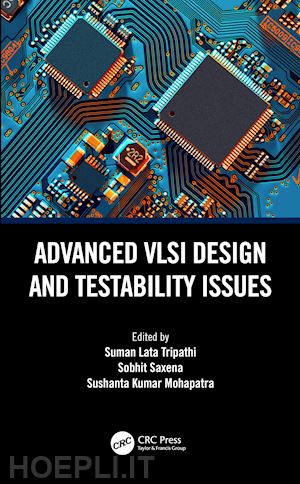Chapter 1 Digital Design with Programmable Logic Devices M. Panigrahy, S. Jena, and R. L. Pradhan Chapter 2 Review of Digital Electronics Design Reena Chandel, Dushyant Kumar Singh, and P. Raja Chapter 3 Verilog HDL for Digital and Analog Design Ananya Dastidar Chapter 4 Introduction to Hardware Description Languages Shasanka Sekhar Rout and Salony Mahapatro Chapter 5 Introduction to Hardware Description Languages (HDLs) P. Raja, Dushyant Kumar Singh, and Himani Jerath Chapter 6 Emerging Trends in Nanoscale Semiconductor Devices B. Vandana, B. S. Patro, J. K. Das, S. K. Mohapatra, and Suman Lata Tripathi Chapter 7 Design Challenges and Solutions in CMOS-Based FET Madhusmita Mishra and Abhishek Kumar Chapter 8 Analytical Design of FET-Based Biosensors Khuraijam Nelson Singh and Pranab Kishore Dutta Chapter 9 Low-Power FET-Based Biosensors Prasantha R. Mudimela and Rekha Chaudhary Chapter 10 Nanowire Array–Based Gate-All-Around MOSFET for Next-Generation Memory Devices Krutideepa Bhol, Biswajit Jena, and Umakanta Nanda Chapter 11 Design of 7T SRAM Cell Using FinFET Technology T. Santosh Kumar and Suman Lata Tripathi Chapter 12 Performance Analysis of AlGaN/GaN Heterostructure Field-Effect Transistor (HFET) Yogesh Kumar Verma and Santosh Kumar Gupta Chapter 13 Synthesis of Polymer-Based Composites for Application in Field-Effect Transistors Amit Sachdeva and Pramod K. Singh Chapter 14 Power Efficiency Analysis of Low-Power Circuit Design Techniques in 90-nm CMOS Technology Yelithoti Sravana Kumar, Tapaswini Samant, and Swati Swayamsiddha Chapter 15 Macromodeling and Synthesis of Analog Circuits B. S. Patro and Sushanta Kumar Mandal Chapter 16 Performance-Linked Phase-Locked Loop Architectures: Recent Developments Umakanta Nanda, Debiprasad Priyabrata Acharya, Prakash Kumar Rout, Debasish Nayak, and Biswajit Jena Chapter 17 Review of Analog-to-Digital and Digital-to-Analog Converters for A Smart Antenna Application B. S. Patro, A. Senapati, and T. Pradhan Chapter 18 Active Inductor–Based VCO for Wireless Communication Aditya Kumar Hota, Shasanka Sekhar Rout, and Kabiraj Sethi Chapter 19 Fault Simulation Algorithms: Verilog Implementation Sobhit Saxena Chapter 20 Hardware Protection through Logic Obfuscation Jyotirmoy Pathak and Suman Lata Tripathi











